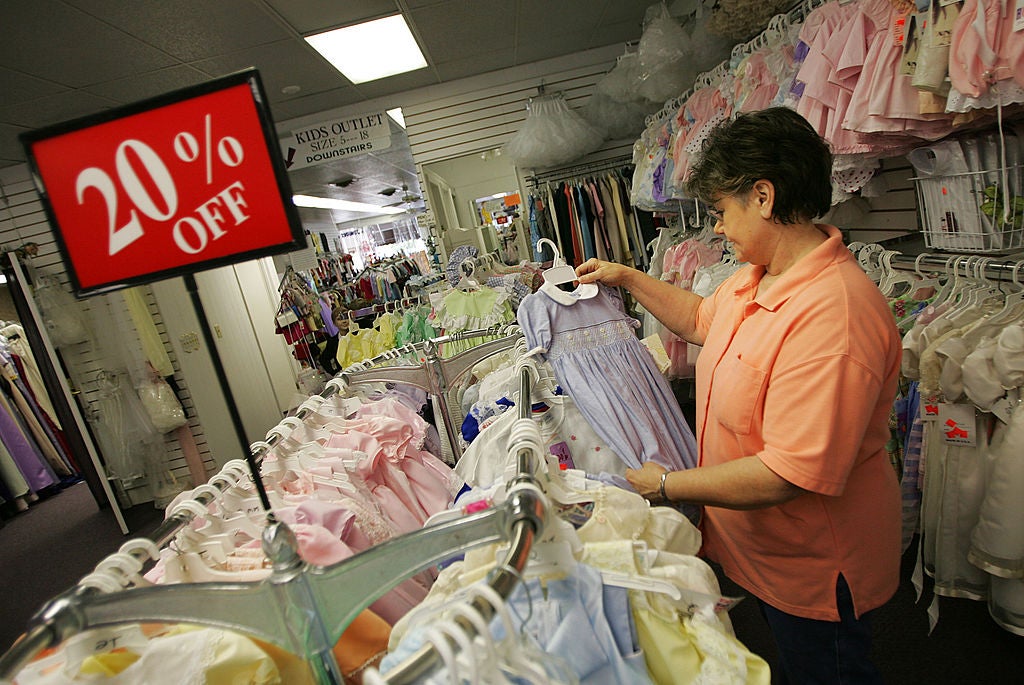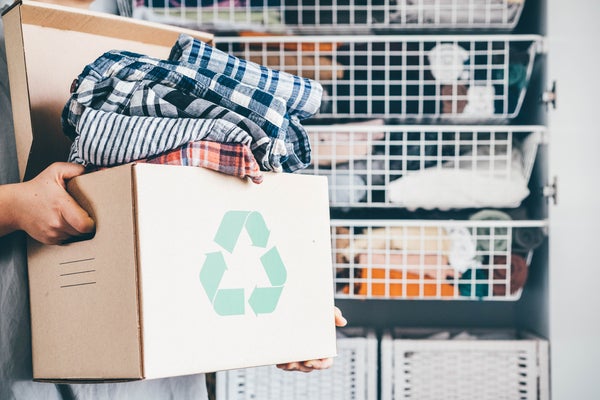Here Are 9 Great Places In Massachusetts To Consign Children’s Clothes
Instead of donating your clothing or throwing them away, have you ever thought to consign your children’s clothes? Chances are, your baby is a grownup now. So, there’s no need…

It’s really fun to consign clothes. It’s like you’re “donating” them, but you’re also making money in the process. It’s like the best of both worlds. See how it works!
Instead of donating your clothing or throwing them away, have you ever thought to consign your children's clothes? Chances are, your baby is a grownup now. So, there's no need to keep those walkers, shoes or baby body carriers anymore. Consign them with one of these local Massachusetts consignment shops!
Consignment of children's clothing and other items benefits both parents and the environment. It offers a smart and sustainable way to manage children's ever-changing needs while also providing opportunities for financial gain and community engagement.
Advantages Of Consigning
One of the most significant advantages of consigning children's clothing is the opportunity to earn money, or trade items for credit. As children outgrow their clothes and toys quickly, many of these items remain in excellent condition. If you're like my baby, he didn't even wear some of the clothes we bought for him.
Consignment shops provide a place where parents can bring in gently-used clothing, playpens, toys, and other children's items and offer them for sale to other parents or caregivers.
How Do You Consign Children's Clothes?

I have found some great deals on gently-worm baby clothes while consigning. It's amazing to see what people part with after their babies grow.
The process of consigning is pretty straightforward. Parents can choose to sell their items directly to the consignment shop, which will then price and display them for other potential buyers. Alternatively, they can opt for consignment, where the shop takes a percentage of the sale once the item is sold. This approach allows parents to have a more active role in setting the prices and managing their inventory.
When the items find a new home and sell, the original owners can earn a portion of the proceeds, often in the form of cash or store credit. This credit can be used to purchase other children's clothing or items available in the store, providing a seamless and cost-effective way to update a child's wardrobe or toy collection.
Benefits of Consigning Children's Items

Trading items for credit is not only economical but also environmentally friendly. By participating in consignment, parents actively contribute to the circular economy, promoting the reuse and recycling of products. Rather than discarding items that are still in excellent condition, they get a second life, reducing waste and minimizing their overall environmental impact.
Here Are The Top Places to Consign Children's Clothes In Massachusetts:
Children's Drop & Shop - Danvers, MA
Danvers Indoor Sports, 150 Andover St, Danvers, MA
This will want to be your place if you live on the North Shore and need items for your baby. They do consignment events twice a year. Once for the spring/summer and once for the fall/winter. Consigners come from all over New England and according to their website, "Our consignors earn 50% of sales and if done right, they can make over $1000 in consignment earnings."
Learn how to become a vendor and when/where to shop at this event by going to their website.
Kids Echo - Lakeville, MA
166 County St, Lakeville, MA
Kids Echo is a boutique but they also have a consignment area where people consign anything from newborn age all the way up to teenage. They have toys, clothes, and baby gear. If you'd like to consign, they don't allow drop-offs. You must schedule an appointment online.
Periwinkle's Consignment Store - Bridgewater
38 Central Square, Bridgewater, MA
Periwinkle's Consignment Store consigns all clothing for all ages, but they do have a baby section. So, this store won't be entirely for children, but you might find some treasures in this consignment store!
Children's Orchard - Multiple Locations
Braintree, Norwood, Westborough, Seekonk, Rowley, Amesbury
Children's Orchard is a chain of children's consignment stores. There are multiple locations in every state, but six located in MA. This is one of the few consignment shops where you can bring your clothes in and they will give you cash on the spot. Not a bad deal if you're looking to get rid of your clothes and spend your new cash instantly!
Fireflies Boutique - Gloucester
100 Main St, Gloucester, MA
Fireflies is a thrift shop and a consignment shop. They have all types of clothes and baby items and lots of great deals! I'm not sure if you need an appointment to consign your items, but you can always give them a call to find out at 978-283-1379
Keeping the Pace With Multiple Miracles - West Bridgewater
389 W Center St, West Bridgewater, MA
Keeping the Pace With Multiple Miracles is more of a donation center, rather than a consignment shop. But someone suggested that I add it to this list and after some research I am SO glad I'm adding it. Not only can you donate your unwanted baby clothes and items, but they also have a "Baby Cafe" where mothers can go and meet other mothers and their babies while sipping on a cup of coffee. They also offer breastfeeding support groups. They meet Tuesday mornings at 8:30am at the Cafe. Their Resale Boutique is open to the public Monday- Saturday 10am-4pm.
There They Grow Again - Pembroke/Dedham
708 Washington St, Pembroke, MA
There will be 300 local moms consigning at their "All The Seasons" event in Pembroke from Aug 16-20th at 708 Washington St. This is free admission if you want to shop. If you want to be a consigner, you can apply to be one. There's a $20 registration fee and some rules to follow, but you could make some big bucks if you have lots to sell. They also do a fall event in Dedham. All info can be found on their website.
Kids Closet - Pembroke
46 Columbia Rd # 5A, Pembroke, MA 02359
They have sports equipment, clothes, baby items. You name it, they have it. They don't have a functional website, but feel free to call them and ask any questions you have about cosigning with them at 781-829-9970 or visit their Facebook page.
Growing Up Children's Resale Boutique - Belmont
443 Common St, Belmont, MA
They have almost 10,000 followers on their Facebook page and a lot of great reviews. One review from Dawn wrote, "They accept a good variety of clothing and the staff are always friendly."








